Related Research Articles
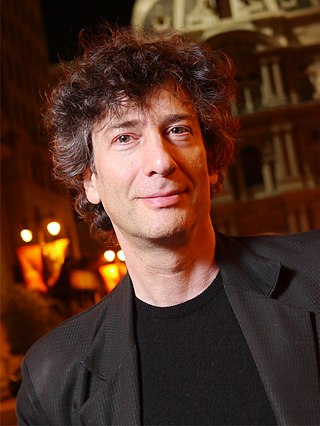
Neil Richard MacKinnon Gaiman is an English author of short fiction, novels, comic books, graphic novels, audio theatre, and screenplays. His works include the comic book series The Sandman and the novels Good Omens, Stardust, Anansi Boys, American Gods, Coraline, and The Graveyard Book. In 2023, he starred as the voice of Gef the talking mongoose in the black comedy film Nandor Fodor and the Talking Mongoose.
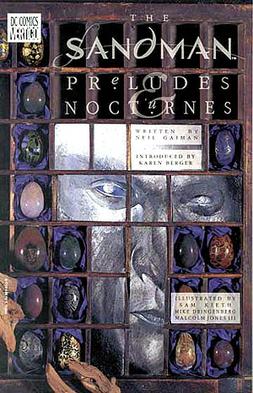
Preludes & Nocturnes is the first trade paperback collection of the comic book series The Sandman, published by the DC Comics imprint Vertigo. It collects issues #1–8. It is written by Neil Gaiman, illustrated by Sam Kieth, Mike Dringenberg and Malcolm Jones III, colored by Robbie Busch and lettered by Todd Klein.
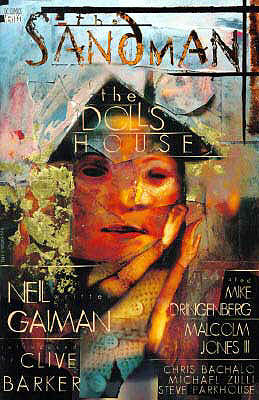
The Doll's House is the second trade paperback of the DC comic series The Sandman. It collects issues #9–16. It was written by Neil Gaiman, illustrated by Mike Dringenberg, Malcolm Jones III, Chris Bachalo, Michael Zulli and Steve Parkhouse, coloured by Robbie Busch and lettered by Todd Klein.
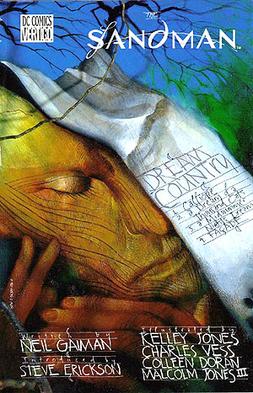
Dream Country is the third trade paperback collection of the comic book series The Sandman, published by DC Comics. It collects issues #17–20. It is written by Neil Gaiman, illustrated by Kelley Jones, Charles Vess, Colleen Doran and Malcolm Jones III, coloured by Robbie Busch and Steve Oliff, and lettered by Todd Klein.

Fables & Reflections (1993) is an American fantasy comic book, the sixth collection of issues in the DC Comics series The Sandman. It was written by Neil Gaiman and illustrated by Bryan Talbot, Stan Woch, P. Craig Russell, Shawn McManus, John Watkiss, Jill Thompson, Duncan Eagleson, Kent Williams, Mark Buckingham, Vince Locke and Dick Giordano, coloured by Daniel Vozzo and Lovern Kindzierski/Digital Chameleon, and lettered by Todd Klein. The introduction is written by Gene Wolfe.
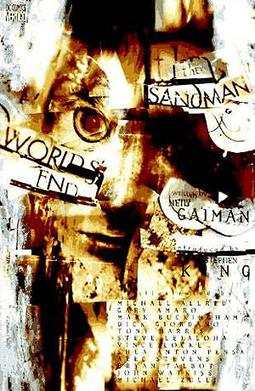
Worlds' End (1994) is the eighth collection of issues in the DC Comics series The Sandman. It was written by Neil Gaiman; illustrated by Michael Allred, Gary Amaro, Mark Buckingham, Dick Giordano, Tony Harris, Steve Leialoha, Vince Locke, Shea Anton Pensa, Alec Stevens, Bryan Talbot, John Watkiss, and Michael Zulli; colored by Danny Vozzo; and lettered by Todd Klein. The stories in the collection first appeared in 1993. The collection first appeared in paperback and hardback editions in 1994 with an introduction by Stephen King. The collection's title, setting, and a number of its themes and images are also found in G.K. Chesterton's poem "A Child of the Snows".

The Kindly Ones (1996) is the ninth collection of issues in the DC Comics series, The Sandman. Written by Neil Gaiman, illustrated by Marc Hempel, Richard Case, D'Israeli, Teddy Kristiansen, Glyn Dillon, Charles Vess, Dean Ormston and Kevin Nowlan, coloured by Daniel Vozzo, and lettered by Todd Klein.The volume features an introduction by Frank McConnell.

The Wake is the tenth and final collection of issues in the American comic book series The Sandman. It is written by Neil Gaiman, illustrated by Michael Zulli, Jon J. Muth and Charles Vess, colored by Daniel Vozzo and Jon J. Muth, and lettered by Todd Klein.

The Sandman is a comic book written by Neil Gaiman and published by DC Comics. Its artists include Sam Kieth, Mike Dringenberg, Jill Thompson, Shawn McManus, Marc Hempel, Bryan Talbot, and Michael Zulli, with lettering by Todd Klein and covers by Dave McKean. The original series ran for 75 issues from January 1989 to March 1996. Beginning with issue No. 47, it was placed under DC's Vertigo imprint, and following Vertigo's retirement in 2020, reprints have been published under DC's Black Label imprint.
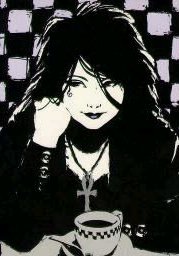
Death of the Endless is a fictional personification of death who appears in American comic books published by DC Comics. She first appeared in The Sandman vol. 2, #8, and was created by Neil Gaiman and Mike Dringenberg.

Dream of the Endless is a fictional anthropomorphic personification who first appeared in the first issue of The Sandman, written by Neil Gaiman and published by DC Comics. One of the seven Endless, who are inconceivably powerful beings older and greater than gods, Dream is both lord and personification of all dreams and stories, all that is not in reality. He has taken many names, including Morpheus and Oneiros, and his appearance can change depending on the person who is seeing him. Dream was named the sixth-greatest comic book character by Empire. He was also named fifteenth in IGN's 100 Top Comic Book Heroes list.
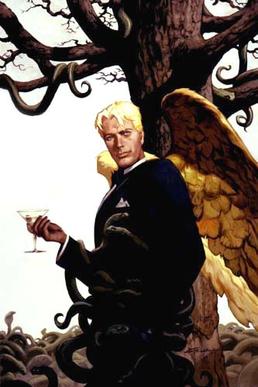
Lucifer Samael Morningstar is a character who appears in American comic books published by DC Comics. He is an adaptation of Lucifer—the Biblical fallen angel and devil of Christianity—and is one of the most powerful beings in the DC Universe. Though various versions of the Devil have been presented by DC Comics, this interpretation by Neil Gaiman debuted in The Sandman #4 in 1989. Lucifer appears primarily as a supporting character in The Sandman and as the protagonist of the spin-off Lucifer.
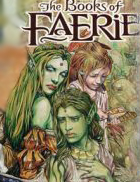
Titania is a fictional character, a comic book faerie published by DC Comics. She first appeared in The Sandman #19, and was created by Neil Gaiman and Charles Vess. She is inspired by and implied to be the same as Titania as the faerie queen in William Shakespeare's play A Midsummer Night's Dream.

Michael Zulli is an American artist known for his work as an animal and wildlife illustrator and as a comic book illustrator.

Destiny: A Chronicle of Deaths Foretold is a 1996 comic book mini-series published by Vertigo, written by Alisa Kwitney and with art by Kent Williams, Michael Zulli, Scott Hampton and Rebecca Guay. A spin-off from Neil Gaiman's Sandman series, it features Destiny of the Endless, a character available for use by other writers because, unlike the other Endless, Gaiman had not created him.
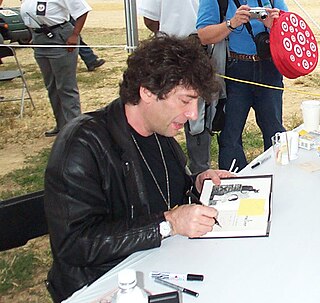
This is a list of works by Neil Gaiman.
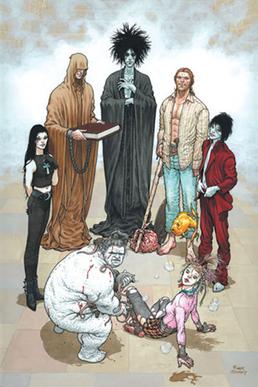
The Endless are a family of beings who appear in American comic books published by DC Comics. The members of the family include Death, Delirium, Desire, Despair, Destiny, Destruction, and Dream.
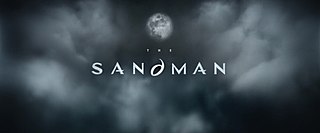
The Sandman is an American fantasy drama television series based on the 1989–1996 comic book written by Neil Gaiman and published by DC Comics. The series was developed by Gaiman, David S. Goyer, and Allan Heinberg for the streaming service Netflix and is produced by DC Entertainment and Warner Bros. Television. Like the comic, The Sandman tells the story of Dream / Morpheus, the titular Sandman. The series stars Tom Sturridge as the title character, with Boyd Holbrook, Vivienne Acheampong, and Patton Oswalt in supporting roles.
References
- 1 2 3 Gaiman, Neil (1990). "Men of Good Fortune". The Sandman: The Doll's House. New York: DC Comics. ISBN 0-930289-59-5.
- ↑ Gaiman, Neil (1996). "Kindly Ones: 3". The Sandman: The Kindly Ones. New York: DC Comics. ISBN 1-56389-204-9.
- 1 2 Neil Gaiman; Michael Zulli (1997). "An Epilogue, Sunday Mourning". The Wake. Vertigo. ISBN 978-0865680975.
- ↑ Bender, Hy (2000). The Sandman Companion. Titan Books Ltd. p. 247. ISBN 1840231645.
- ↑ McCabe, Joseph (2005). Hanging Out With the Dream King. Fantagraphics Books. p. 160. ISBN 9781560976172.